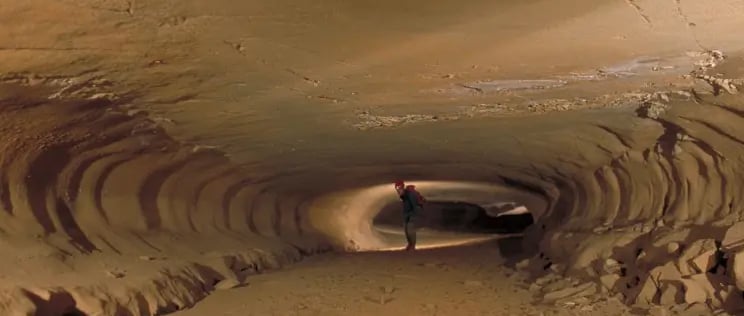Do You Know About the World’s Largest Cave System?
Explore Mammoth Cave—the world's largest cave system with over 420 miles mapped, unique wildlife, ancient fossils, and a record of human history carved in stone.
KNOWLEDGE & EDUCATION
Do You Know Team
8/6/20252 min read


Deep beneath Kentucky's rolling hills lies a labyrinth that's more than a cave—it’s a journey through millions of years, scientific marvels, and human history. Mammoth Cave is the longest known cave system on Earth, with over 420 miles (676 km) of mapped passageways. But that’s only the beginning of what makes this underground wonder so extraordinary. Let’s step inside and uncover its secrets.
1. Unmatched in Scale and History
Mammoth Cave has the distinction of being the longest cave system in the world—1.5 times longer than Mexico’s Sac Actun underwater system. Currently, over 456 km (285 miles) have been surveyed within the park boundaries, and another 128 km (80 miles) extend beyond.
The cave's passages began forming between 10 to 15 million years ago, even though the limestone they formed in originated about 320 to 360 million years ago.
2. A Treasure Trove of Biodiversity
Despite its underground setting, Mammoth Cave boasts remarkably rich biodiversity. Research has documented 49 cave-limited species, of which seven are entirely endemic to the cave system. These include troglobites—organisms adapted to live entirely in darkness—and stygobites, their aquatic counterparts.
Additionally, the cave supports endangered species like freshwater mussels, certain bats, and the unique Kentucky cave shrimp.
3. A Record Preserved in Stone
Mammoth Cave is more than a geological wonder—it’s a natural archive, preserving over 5,000 years of human history. Native American artifacts dating back millennia, colonial-era inscriptions, and the legacy of early enslaved and freed guides offer a living chronicle of human interaction with the earth.
4. Global Recognition & Protection
Mammoth Cave’s significance goes beyond its size—it’s a UNESCO World Heritage Site and has been part of the International Biosphere Reserve since 1990. Its karst landscape features nearly all known cave formations, offering unparalleled geological insight into Earth’s evolution.
5. New Discoveries Still Unfold
Exploration continues—new passageways are still being mapped. In 2021, researchers added eight miles of new tunnels, pushing the total mapped length to over 420 miles.
On the paleontology front, scientists recently unearthed a 340-million-year-old shark tooth—a new species named Macadens olsoni, one of several ancient marine fossils found within the cave.
FAQs
Q1: How long is the Mammoth Cave system?
Over 420 miles (676 km) have been mapped, with ongoing exploration likely to increase that total.
Q2: Why is Mammoth Cave so ecologically important?
It hosts a remarkable set of cave-adapted species, several endangered, and preserves ancient geological formations.
Q3: Can visitors explore the cave?
Yes—guided tours cover several miles. The park offers both surface and underground experiences, from hiking to cave treks.
Q4: What makes the cave’s geology special?
It contains almost every known type of cave formation and holds a continuous geological record spanning 100 million years.
Q5: Have any fossils been found there recently?
Yes—a newly discovered ancient shark species called Macadens olsoni was recently unearthed, showcasing the cave’s paleontological richness.
Conclusion
Mammoth Cave isn’t just a cave—it’s a vast, living chronicle carved into Earth’s history. From its immense labyrinth of tunnels to rare species and fossil treasures, it captures both the planet’s past and our shared legacy. As explorers continue to map and study its depths, Mammoth Cave remains a powerful reminder of nature’s grand scale and enduring mystery.
#MammothCave,#WorldsLargestCave,#CaveBiodiversity,#Geology,#Paleontology,#NaturalWonder,#DoYouKnowFacts
Knowledge
Empowering minds with reliable educational content daily.
Newsletter Signup
© 2025 DoYouKnow. All rights reserved.
Stay Ahead of the Trends – Join Our Newsletter
